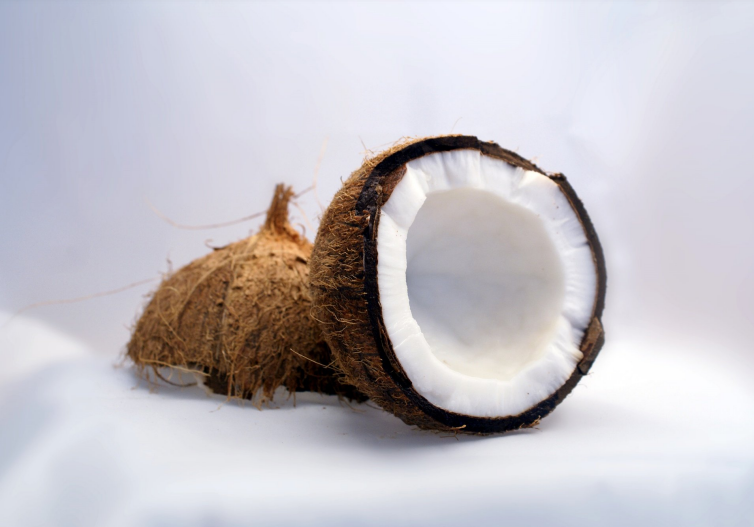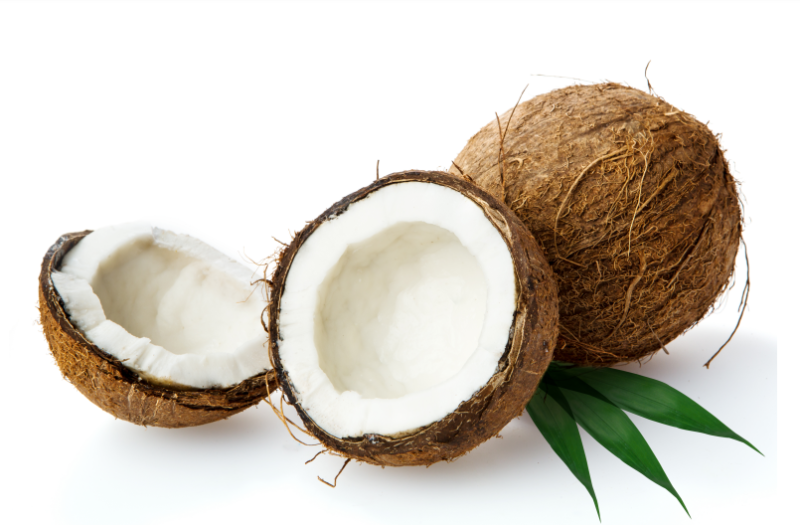In addition to adding taste to a wide range of foods, coconut also contains important vitamins and minerals. Additionally, shredded coconut has 33 grams of fat and 40 grams of sugar per cup, which considerably reduces the food’s nutritious worth. While there are certain nutritional advantages to eating shredded coconut, you should add it to your diet in moderation.
In this article, I’ll go over everything you need to know about making shredded coconut from scratch. Keep reading to know more about shredded coconut.
What Is Shredded Coconut?

Shredded coconut is a type of coconut meat that has been grated or shredded into small, thin pieces. It is a common ingredient used in baking, desserts, and savory dishes, and is often used as a topping or garnish. It can be found in both sweetened and unsweetened varieties and can be used in a variety of recipes, such as coconut macaroons, coconut cakes, and coconut curry dishes. It is also a good source of fiber and healthy fats.
Is Shredded Coconut and Desiccated Coconut The Same?
Shredded coconut and desiccated coconut are not exactly the same, although they are both made from the flesh of a mature coconut.
Shredded Coconut is made by shredding fresh coconut meat into thin strands and then drying it. It tends to be moister and sweeter than desiccated coconut and has a slightly chewy texture. It is commonly used in baking and confectionery.
Desiccated Coconut, on the other hand, is made by finely grinding dried coconut meat into a coarse or fine powder. It is drier and has a finer texture than shredded coconut. Desiccated coconut is often used as a topping for cakes and pastries or as an ingredient in curries and other savory dishes.
So, while both shredded coconut and desiccated coconut are made from coconut meat, the difference lies in their texture and moisture content, and they may not always be interchangeable in recipes.
Click here to buy shredded coconut unsweetened now.
How To Make Shredded Coconut

Making shredded coconut from scratch is not very difficult, but it does require some effort. Here are the steps to make shredded coconut from fresh coconut:
Materials:
- Fresh coconut
- A sharp knife
- A spoon
- A vegetable peeler or a box grater
Instructions:
- Begin by cracking open the coconut. You can do this by piercing the eyes of the coconut with a sharp knife and draining out the water inside. Then, hold the coconut firmly and strike it firmly with the back of a heavy knife or a hammer until it cracks open.
- Use a spoon to scrape the flesh of the coconut away from the shell. The coconut flesh should come off easily if the coconut is fresh.
- Peel off the brown outer skin of the coconut flesh using a vegetable peeler or a box grater.
- Rinse the peeled coconut flesh with water and pat it dry with a clean towel.
- Using a box grater or a vegetable peeler, shred the coconut flesh into thin pieces.
- Once you have shredded all of the coconut flesh, spread it out on a baking sheet and toast it in a 350-degree oven for about 5-10 minutes until it turns golden brown. Alternatively, you can also dry the shredded coconut under the sun or using a dehydrator.
- Let the toasted coconut cool down before storing it in an airtight container.
Shredded Coconut: Storing
The dry coconut can be stored at room temperature for approximately six months if it is placed in an airtight glass container. They can also be frozen for up to a year or even longer, or you can refrigerate them for longer.
Click here to buy shredded coconut sweetened now.
What is Coconut Good For?

Coconut has many health benefits and is considered a superfood. Below are some of the benefits of coconut:
Nutrient-Dense: Coconut is rich in essential vitamins and minerals, including manganese, copper, iron, and selenium.
Heart Health: The medium-chain triglycerides (MCTs) in coconut may help lower cholesterol levels, reduce inflammation, and improve heart health.
Weight Management: The MCTs in coconut are also thought to boost metabolism and increase feelings of fullness, making it a good option for weight management.
Skin and Hair Health: Coconut oil can be applied topically to the skin and hair to moisturize and nourish, and may even have anti-aging properties.
Immune System: Coconut is high in lauric acid, which has antimicrobial properties that can boost the immune system and help fight off infections.
Digestive Health: Coconut is a good source of fiber, which can promote healthy digestion and help prevent constipation.
Coconut is a versatile and nutritious food that can be enjoyed in many forms, including coconut water, coconut milk, coconut oil, and shredded coconut.
Can I Use Shredded Coconut For Skin?
While coconut is known for its many health benefits, including its moisturizing and anti-inflammatory properties, it’s important to keep in mind that using shredded coconut directly on your skin may not be the best idea.
Shredded coconut can be quite abrasive, which could lead to skin irritation or even small cuts. Additionally, the coconut may contain bacteria or other impurities that could cause an infection if applied directly to the skin.
Instead, it’s best to use Coconut Oil or products made with coconut oil for skin care purposes. Coconut oil is a natural emollient that can help to hydrate and soften the skin. You can also look for skin care products that contain coconut oil as an ingredient.
If you have any concerns about using coconut oil or coconut-based skin care products, it’s always a good idea to consult with a dermatologist or other healthcare provider before use. You can also check our previous articles about coconut oil for hair and skin care here.
Unsweetened vs Sweetened Coconut
Unsweetened coconut is quite distinct from sweetened coconut. While sweetened coconut has sugar added, unsweetened coconut is simply coconut with no sugar added.
The sweetened coconut will be moister and sweeter as a result of the additional sugar. When preparing sweet coconut delicacies, it functions best.
Coconut that hasn’t been sweetened is typically drier and chewier. For baking recipes that already call for a lot of sweet ingredients, it can be a great substitute. Coconut that hasn’t been sweetened also works nicely in savory dishes.
Click here to buy organic sweetened shredded coconut.
Is Shredded Coconut Good For You?
Shredded coconut can be a nutritious and healthy addition to your diet when consumed in moderation. It is a good source of fiber, healthy fats, and minerals such as iron and potassium. However, it is also high in calories and saturated fat, so it’s important to consume it in moderation and as part of a balanced diet.
It’s worth noting that some commercially available shredded coconut products may contain added sugar and preservatives, so it’s always a good idea to check the ingredient list before purchasing. Additionally, some people may be allergic to coconut, so it’s important to be aware of any potential allergies or sensitivities.
Does Shredded Coconut Go Bad?
Like all food items, it can go bad over time. The shelf life of shredded coconut depends on various factors, such as how it is stored, the packaging, and whether it is sweetened or unsweetened.
Unsweetened shredded coconut typically has a longer shelf life than sweetened shredded coconut because sugar can contribute to moisture, which can lead to spoilage.
If stored properly in an airtight container in a cool, dry place, unsweetened shredded coconut can last up to six months beyond its “best by” or “use by” date. However, sweetened shredded coconut may only last a few weeks past its expiration date.
It’s always a good idea to check for any signs of spoilage, such as a rancid or off smell or taste, mold, or discoloration, before consuming that has been stored for a long time.
How Do I Pick the Correct Kind of Coconut?

Size: Coconuts come in different sizes, ranging from small to large. Generally, the larger coconuts contain more water and flesh than the smaller ones.
Weight: A heavy coconut is usually a good sign that it has a lot of water and flesh inside.
Sound: When you shake the coconut, you should hear the sound of water sloshing inside. If you don’t hear any sound, it may be an indication that the coconut is old or dried out.
Color: A good coconut should have a rich brown color. If it’s too green, it may not be ripe enough, and if it’s too brown, it may be overripe.
Texture: When you touch the coconut, it should feel firm and solid. If it feels too soft, it may be spoiled.
Eye: Check the three “eyes” on the top of the coconut. One of them should be soft and pliable, indicating that the coconut is fresh. If all three are hard, the coconut may be old.
Origin: If possible, choose coconuts that are locally grown and freshly harvested. They will be more flavorful and have a better texture than those that have been shipped long distances.
Click here to buy shredded coconut now.
Conclusion
Making shredded coconut from scratch is a simple and straightforward process that requires only a few basic tools and ingredients. By following the steps outlined in the recipe, you can easily create your own fresh and flavorful shredded coconut that can be used in a wide variety of recipes.
Whether you are looking to add coconut flavor and texture to baked goods, smoothies, or savory dishes, making your own coconut shredded allows you to control the quality and flavor of the ingredient, ensuring that it is fresh and free from any additives or preservatives.
So why not try making your own shredded coconut today and see how easy and delicious it can be?



Comments are closed.